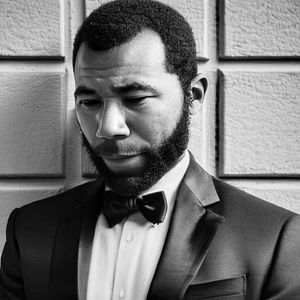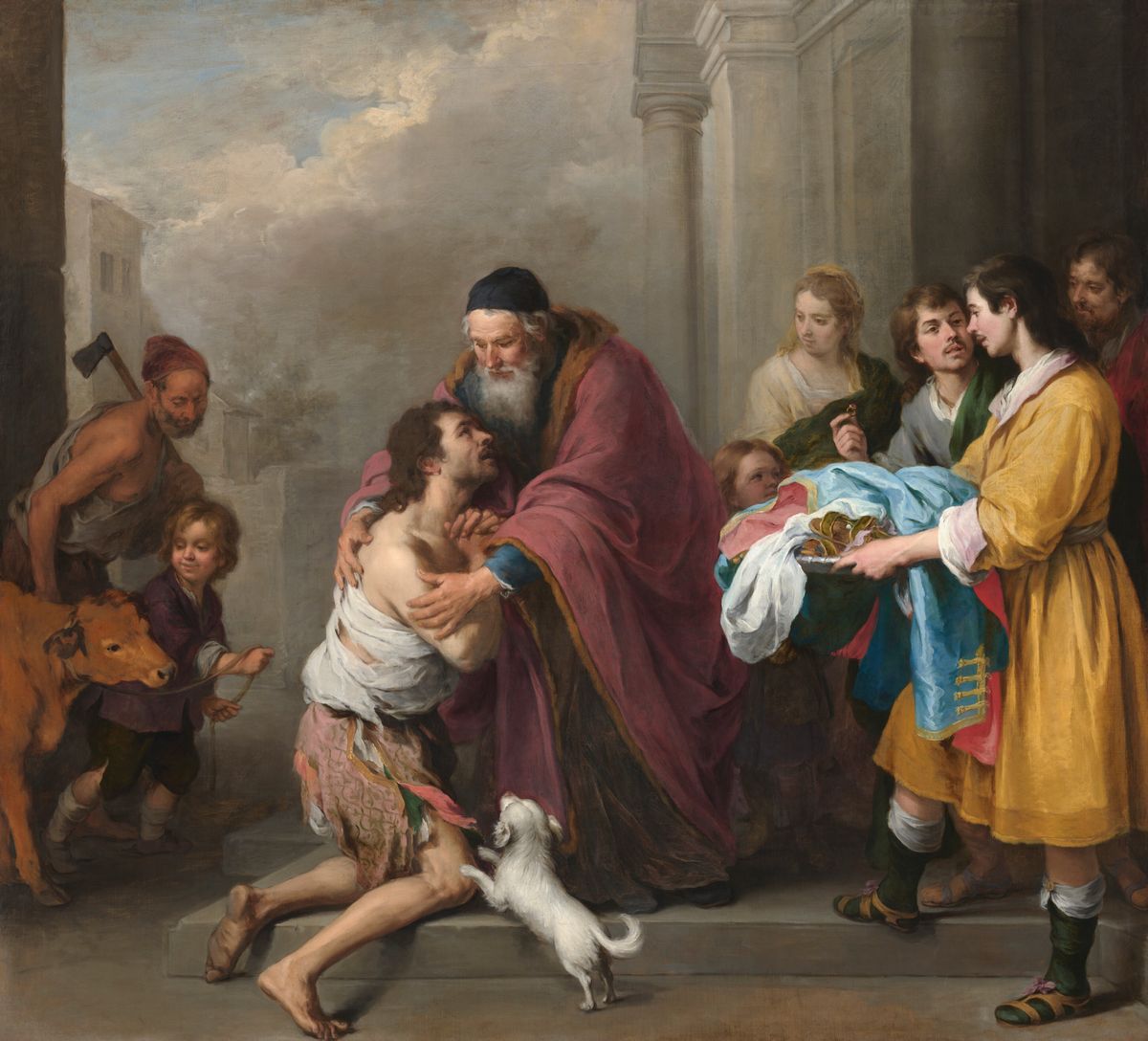About the Image:
Murillo's great talent for dramatic painting is apparent in this monumental depiction of the familiar parable of the prodigal son, an allegory of repentance and divine forgiveness. With players and props effectively placed to underscore the drama, it is reminiscent of a well-staged theater piece.
The artist selected the essential elements of the story's climax: the penitent son welcomed home by his forgiving father; the rich garments and ring that signify the errant son's restoration to his former position in the family; and the fatted calf being led to the slaughter for the celebratory banquet. The larger-than-life, central, pyramidal grouping of father and son dominates the picture, while the richest color is reserved for the servant bearing the new garments. Murillo may have chosen to emphasize that aspect of the parable -- symbolic of charity -- because of the nature of the commission. The Return of the Prodigal Son was one of eight huge canvases painted for the Church of the Hospital of Saint George in Seville, a hospice for the homeless and hungry.
Murillo's model was the life around him; part of the appeal of this canvas lies in its human touches -- the realism of the prodigal's dirty feet, the puppy jumping up to greet his master, and perhaps most of all, the ingenuous smile of the little urchin leading the calf.
More information on this painting can be found in the Gallery publication Spanish Paintings of the Fifteenth through Nineteenth Centuries, which is available as a free PDF https://www.nga.gov/content/dam/ngaweb/research/publications/pdfs/spanish-painting-15th-19th-centuries.pdf
About the Artist:
Bartolomé Esteban Murillo (1617-1682) was a Spanish Baroque painter[1][3]. He was born in Seville, Spain, and is best known for his religious works, although he also produced a considerable number of paintings of contemporary women and children[1]. Murillo was the leading painter in Seville in the later 17th century and remained one of the most admired and popular of all European artists in the 18th and early 19th centuries[2].
Some key facts about Murillo include:
- Birth and Death: Murillo was born in late December 1617 and was baptized on January 1, 1618, in Seville, Crown of Castile (present-day Spain). He died on April 3, 1682, in Seville, at the age of 64[1][3].
- Family: Murillo married Beatriz Cabrera y Villalobos, with whom he eventually had ten children. Of these children, only five outlived their mother, and only one, Gabriel (1655–1700), later carried on the work of Bartolome as a painter[1].
- Style: Murillo's early works were much influenced by the early works of Velázquez, executed before Velázquez left Seville in 1623, and by the paintings of Zurbarán. His style became increasingly free in its handling, as is apparent in his many well-known representations of the Immaculate Conception[2].
- Works: Although Murillo’s subjects were often religious, he also produced many genre paintings of ordinary contemporary life. He depicted the street children of Seville in Grape and Melon Eaters (c. 1645) and glimpses of the aristocracy from the street in Two Women at a Window (c. 1655/1660) [3].
- Legacy: Murillo was the most popular Baroque religious painter of 17th-century Spain, noted for his idealized, sometimes precious manner. He was one of the founders and first president of the Academy of Painting in Sevilla[3].
There are ongoing research and discussions about Murillo's relationship to the enslavement of people[2].
Citations:
[1] https://en.wikipedia.org/wiki/Bartolomé_Esteban_Murillo
[2] https://www.nationalgallery.org.uk/artists/bartolome-esteban-murillo
[3] https://www.britannica.com/biography/Bartolome-Esteban-Murillo
[4] https://www.theartstory.org/artist/murillo-bartolome-esteban/
[5] https://www.artrenewal.org/artists/bartolome-esteban-murillo/2087
[6] https://artuk.org/discover/artists/murillo-bartolome-esteban-16171682








